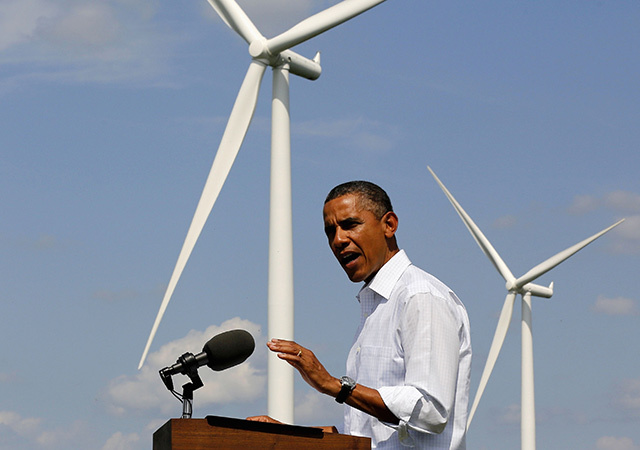
Barack Obama crossed the Arctic Circle in a first by a sitting US president, telling residents in a far-flung Alaska village their plight should be the world’s wake-up call on global warming.
His visit to Kotzebue, a town of some 3,000 people in the Alaska Arctic, was designed to snap the country to attention by illustrating the ways warmer temperatures have already threatened entire communities and ways of life in Alaska.
He said, despite progress in reducing greenhouse gases, the planet is already warming and the US is not doing enough to stop it.
“I’ve been trying to make the rest of the country more aware of a changing climate, but you’re already living it,” Mr Obama told a crowd of more than 1,000 in the rough-and-tumble town on Alaska’s western coast.
As he ended a three-day tour of the state focused almost entirely on climate change, the president sought to show solidarity with Alaska Natives and rural Alaskans whose immense challenges are rarely in the national spotlight.
His brief visit had the feeling of a campaign rally, with throngs of people cheering and applauding when he invoked the historic nature of the first presidential visit to the Arctic.
From the moment Air Force One touched down in Kotzebue, examples of dire poverty and climate-related obstacles were easy to spot.
Mr Obama’s motorcade snaked through the town passing rows of rusting shipping containers and dilapidated huts – almost all on stilts to accommodate gusts of wind and other weather-related events.
It was a topic Mr Obama brought up, by way of praising Alaskans for their perseverance despite poverty, isolation and a lack of support. He said while many speak of America’s pioneering, independent spirit, in Alaska it is not just a slogan but a way of life.
“It can be harsh,” Mr Obama said. “That means that you depend on each other.”
The president came to Alaska with no grand policy pronouncements or promises of massive federal aid.
Instead, he sought to use the changes to Alaska’s breathtaking landscape to put pressure on leaders in the US and abroad to cut greenhouse gas emissions, as he works to secure a global climate treaty that he hopes will form a cornerstone of his environmental legacy.
Temperatures in the Arctic are rising twice as fast as anywhere else on earth, Mr Obama said.
Permafrost, the layer of frozen ice under the surface, is thawing and causing homes, pipes and roads to sink as the soil quickly erodes. Some 100,000 Alaskans live in areas vulnerable to melting permafrost, government estimates show.
As he flew to Kotzebue from the fishing village of Dillingham, Mr Obama directed Air Force One to descend so he could get a closer look at the 400-person village of Kivalina, where residents have voted to relocate the entire community as it sinks into the water.
“Think about it,” Mr Obama said. “If another country threatened to wipe out an American town, we’d do everything in our power to protect it.”
Red Seeberger, an Alaska Native from the Inupiaq tribe, was raised there and said she has seen the effects of climate change first-hand.
“We live out in Bush Alaska. The cost of living here is very high. We live off the land,” she said. “But we still live by our culture.”